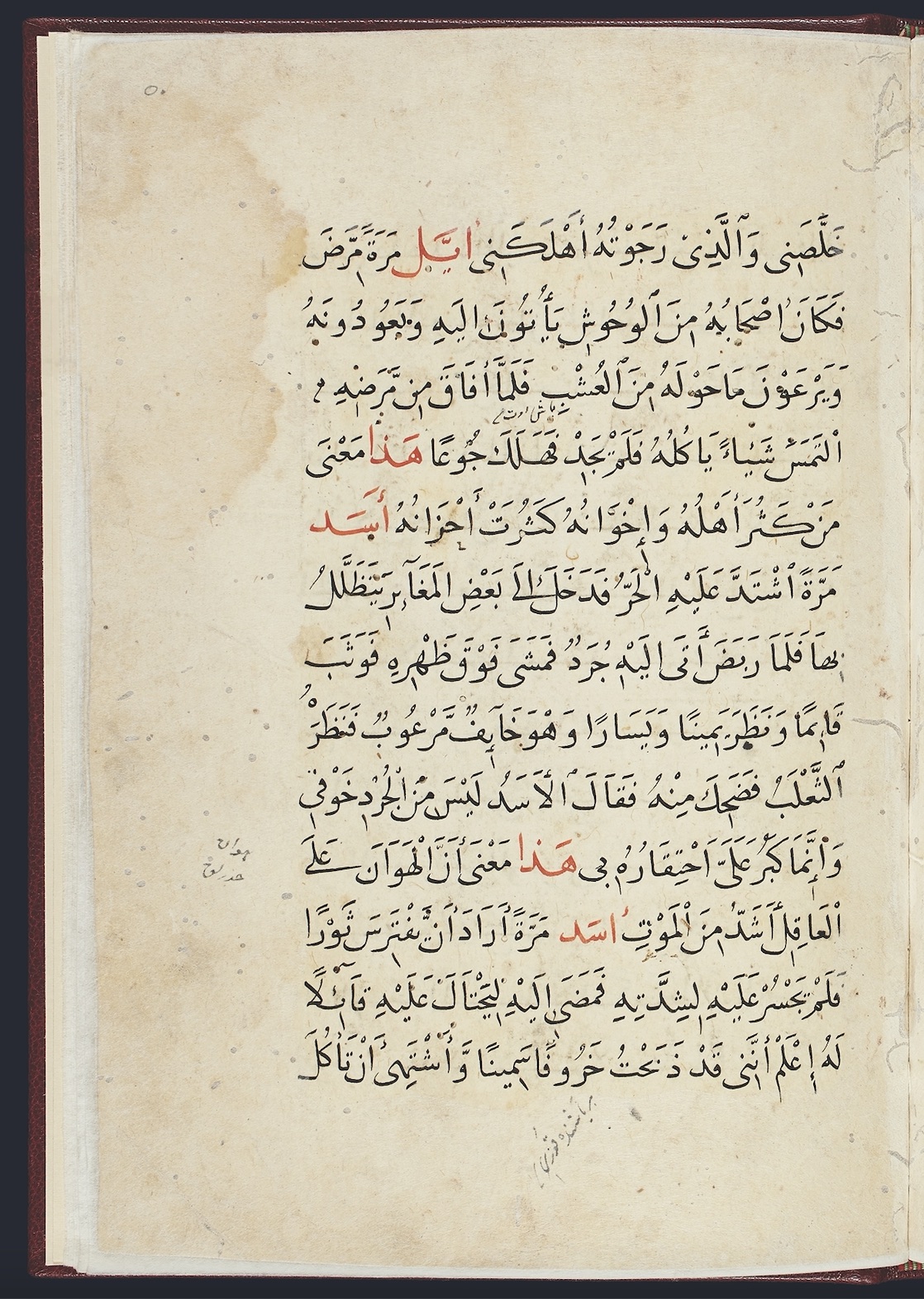Postscript — Luqmān The Sage
Postscript — Luqmān the Sage
Luqmān the Sage (also known as Luqmān al-Ḥakīm, the wise) is a legendary character in Arabic and Islamic storytelling. The historical origins of this sage are difficult to determine. However, two noted figures that go by the name of Luqmān are found in both pre-Islamic and Quranic traditions.
The pre-Islamic Luqmān was from a tribe named ʿAd that settled in the al-Aḥqāf region, between modern-day Yemen and Oman. In this tradition, Luqmān is not only described as a wise man but also as a legendary figure with strength and longevity.
The Quranic Luqmān, instead, is usually described as a slave from Nubia or Egypt who underwent several trials by God and, in the end, managed to prove his wisdom to his enslaver. The 31st surah (chapter) of the Qur’an is named after Luqmān who, according to the sacred book, received his wisdom directly from God.
These two figures fuse together in the literary tradition of fables and proverbs attributed to Luqmān the Sage, texts called Amthāl Luqmān al-Ḥakīm (Proverbs of Luqmān the Wise), or simply, Amthāl. Throughout different historical periods, Luqmān’s fables and proverbs incorporated pre-Islamic Arabic sayings and rhymes; moral and ethical sayings from the Islamic period; and narratives from other traditions, such as the wise tales of the Aramean sage Aḥiqar, those by the Hellenistic Jewish sage Ben Sirach, and fables of Greek origin. Therefore, Luqmān texts circulating under the same title can vary greatly in accordance with the period they were produced or copied.

In HMML’s digital collections, two manuscripts in Arabic (AKDI 01686 0214 and LMMO 00328) and one in Arabic Garshuni (LMMO 00318) feature proverbs and fables attributed to Luqmān. These proverbs are related to the Medieval period (which included Luqmān fables of Greek origin), currently the most common version of this composite tradition that is found in manuscripts.
AKDI 01686 0214 is the oldest copy of the three, a fifteenth-century manuscript held at the Khalidi Library in Jerusalem, likely copied in Egypt. The Amthāl text covers 10 leaves of the manuscript. Most of the proverbs are tales about animals and greatly resemble Aesop’s Fables.
Each story is a few lines long and ends with a proverb or a teaching phrase. For example, one page (folio 50r) of AKDI 01686 0214 contains two stories and the beginning of a third. The first tale is about the disadvantages of having too many friends:
“One day a deer was sick. His animal companions would come to visit him, and [at the same time] they would eat the grass around him. When he woke up from his illness, he looked for something to eat, but he did not find anything, and so he died out of hunger. This story means that whoever has many friends and brothers will have more sorrows.”
The second tale is about how humiliation can affect even the strongest:
“One day a lion became very hot, so he entered a cave to find some shade. When he was resting, a mouse came to him and walked on his back. The lion jumped upright and looked right and left, frightened and awkward. A fox saw him and laughed at him. So the lion said, ‘I was not scared by the mouse! The worst was him humiliating me like that.’ This story means that for the wise ones, humiliation is worse than death.”
Hopefully, the growing collection of digitized manuscripts in HMML Reading Room will allow for more texts covering the different traditions of Luqmān’s tales to be traced and compared with each other.
A version of this story originally appeared in the Winter 2022 issue of HMML Magazine.




